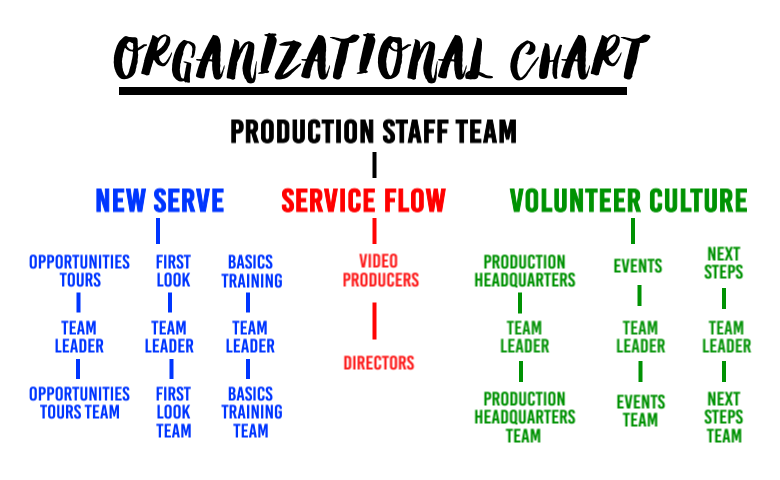Creating an org chart for your media team can be a great way to help organize your production team and allow you to do what is important in your job within your church. Carl Barnhill with Twelve:Thirty Media shows how he created an org chart for his quickly growing staff.

Join Us At SALT19 Conference!
We want to help you grow in your creative, technical and musical ability so you can make a kingdom impact on your local community. So, we’re bringing in 50+ speakers and experts for 40+ workshops, sessions and labs so you can be more of who God made you to be.
Tickets are running out, so head over to SALT19.com for all the details and register today.
NEW SERVE
These teams were responsible for recruiting and training new volunteers.
Opportunities Tour Team: this team hosted potential new volunteers as they toured our ministry. They shared our vision and passed out information about our production team.
First Look Team: this team met with new volunteers coming to our team. They introduced new volunteers to veterans, gave them a behind-the-scenes look at our service and shared information about joining our team- time requirements, training and other important information.
BASICS Training Team: “BASICS” was our volunteer training process. This team ensured that no volunteer ‘fell through the cracks’ and were fully trained before serving on a Sunday.
SERVICE FLOW
This team was responsible for everything dealing with a Sunday. From prepping volunteers to coordinating the control room, to evaluating the service and making changes.
Video Producers: the Video Producer was in-charge of the volunteer team and the execution of a service on a Sunday. This person would be in the control room as an overseer of the service. They would be available to solve problems before they happened, put out fires if necessary and handle everything related to managing the video team. This person also contacted the Director each week and worked directly with the staff team to know the details of a Sunday and communicate those details to the team.
Directors: the Director reported to the Service Producer. This person was responsible for everything that went “live”- they called camera shots, called for graphics and video, broadcast feeds, and everything else that appeared on screens.
VOLUNTEER CULTURE
This team was responsible for our volunteer culture and atmosphere. This was also a great place for someone less technically minded to serve or someone who wanted to serve on our team but not run a piece of gear.
Production Headquarters Team: This team was responsible for making our production hangout space awesome. They coordinated food, provided games and activities, planned devotionals/testimonies/stories/guest speakers, and decorated our space.
Events Team: Our Events Team planned outside activities for our production volunteers. The only requirements I had for this team was to have one small event every month (go to the movies, go bowling, go to a sports game) and one big event every quarter (Chili Cook-Off, Christmas Party, Cookout).
Next Steps Team: This team helped pastor our people. I wanted them to be really involved relationally with people. This team helped people take their next step on our team (with learning a new position, taking on a leadership role, etc.). They also helped people grow spiritually (provided devotional and Bible Study resources, helped them find a small group, helped connect them with counselors, etc.)
Each team involved in New Serve and Volunteer Culture had a Team Leader. Creating an org chart came first so we knew the needs of the team, then we prayed about who would be best to fill these roles.
So, why creating an Org Chart is beneficial….

EXCLUSIVE BONUS:
Get a FREE download of the Volunteer Guide from SALT Community. Click here to download



